If you’re looking to buy your first bass, you want the best bass possible.
But you don’t want to:
Waste all your bass playing time in a deep rabbit hole of gear reviews, forum threads and tons of information that isn’t helpful or practical.
Worry you’re not qualified to make this bass-buying decision.
Stop yourself from diving into the world of bass playing for fear of buying the wrong thing.
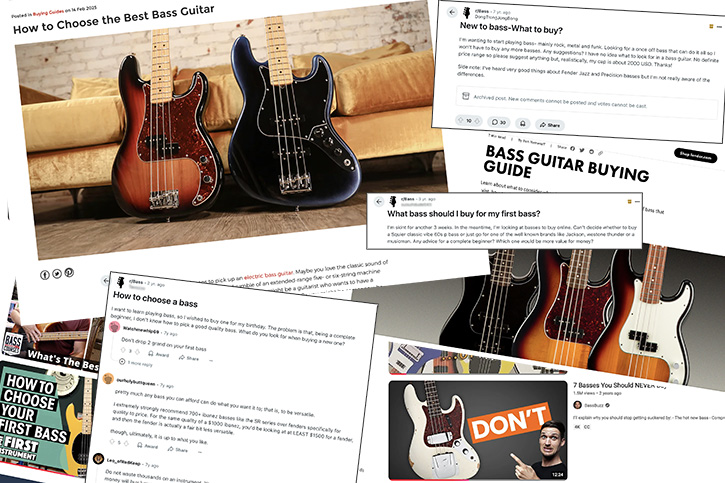
Don’t worry! I’m here to save you from those nasty pitfalls. I’ll give you the wisdom and confidence to find your first bass and start down the noble path of bass playing.
First you need to know what to ignore. Then, figure out what you’ll need to prepare to buy your bass.
Relax! Keep the pressure off. Basses are returnable! All basses are good basses. If you end up with a bass at the end of the process, you have succeeded. Because having a bass to play is infinitely better than not having a bass.
Buying a Bass
Preparing to buy a bass + the Internet = one hot mess.

You wanna be confident in your bass buying decision, so you do what all us Internet sleuths do: get online and absorb as much information as possible, from the comfort of your home and without a bass in your hands.
This will lead you to detailed reviews and specs about different makes and models of bass. There will be heaps of people telling you what they think. They may contradict one another. They will certainly all fill you with loads and loads of opinions and preconceived notions that you absolutely don’t need as a beginning bassist looking to buy your first bass.
It doesn’t have to be like this.
If you’re a beginner, any decently crafted bass with functioning electronics and 4 strings is ENOUGH to get you learning, playing, and performing on electric bass.

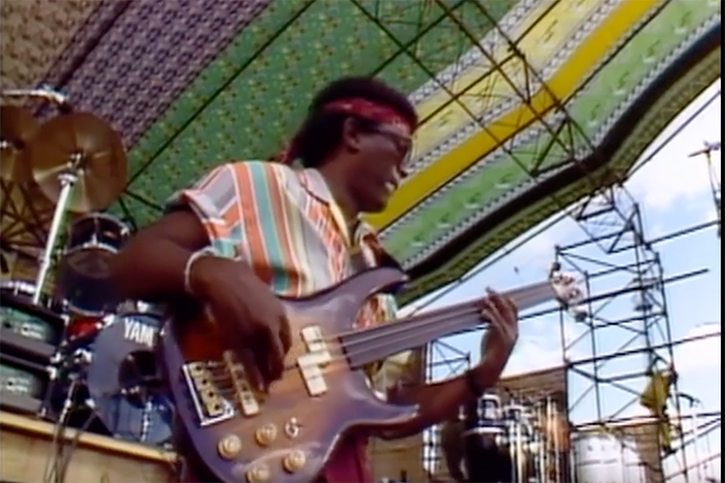
Focusing on specs and details has its time and place, but as a beginner buying a first bass, it’s unnecessary. It drains time and energy, while pumping you full of information that doesn’t have any anchor in real life experience.
There are a million things to ignore as a beginner bass buyer.
Here are my top 10 things from videos and forums that you can absolutely, definitely ignore:

One thing to definitely not ignore is the extremely excellent full beginner bass course we have here. Really. It’s freakin’ good.
10 Things You Can Ignore (and Why)
#1Wood
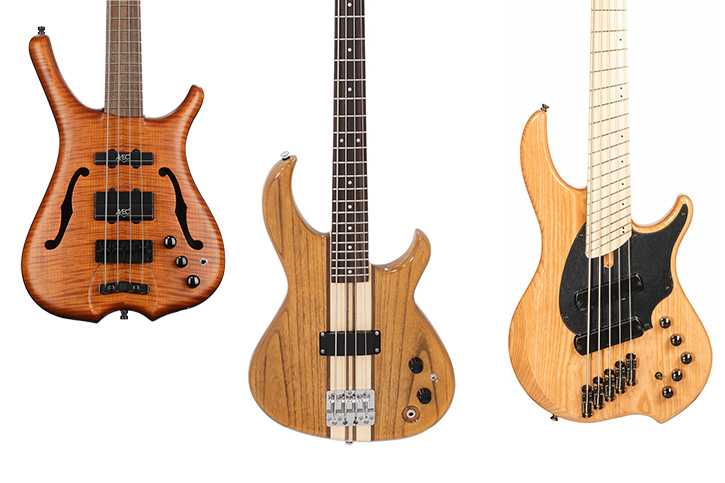
Tonewood, body wood, fingerboard wood – people will want to talk about the subtle sound-enhancing (or killing) qualities of each potential wood type of each part of your bass.
IGNORE THIS.
Wood choice is important for if you like how it looks and feels. That’s important. But it is not an objective measure of quality or sound!
#2Pickups
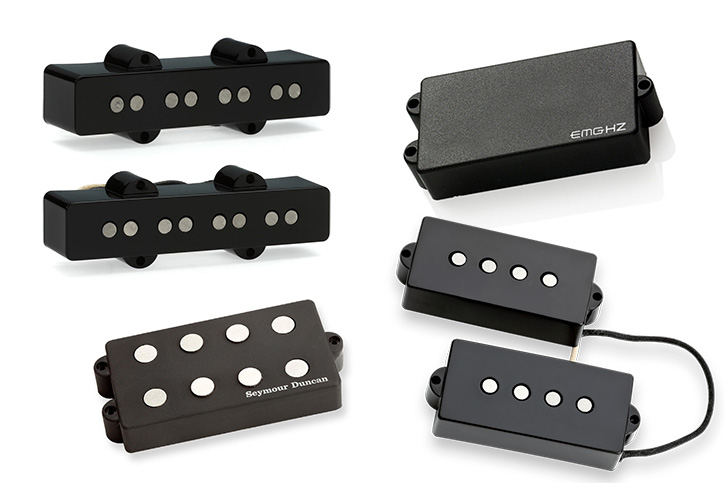
Brands, models, specs, etc. – people will discuss the myriad options, replacements, pros and cons about what pickups come with which basses, which ones to swap out, etc.
IGNORE THIS.
‘Do the pickups work?’ is the basic question for first bass buying. We have to pick and choose our rabbit hole battles, and this is not the one for your first bass.
If you get a decent bass by a decent company, the pickups too will be decent.
If you choose to stick with the noble path of bass playing, you can jump down all of the pickup rabbit holes once you know how to play the instrument.
Active pickups? Passive pickups? – people will debate the finer and nuanced pros and cons of having or not having a preamp as part of the pickup system on your bass. IGNORE THIS.
It doesn’t matter enough to change the bass choice! If you like a bass that has either of these pickup designs, great. Go for it.
#3# of Frets
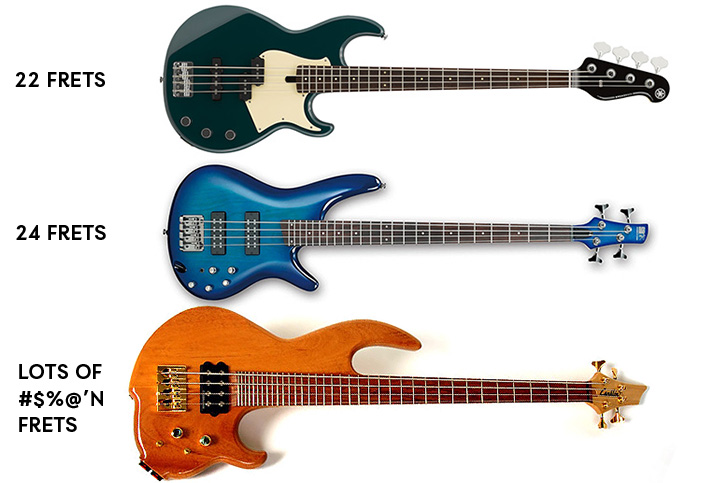
20 frets? 21? 22? 24 frets??? – people will discuss the essential nature of having up to 4 extra frets on the neck of the bass. IGNORE THIS.
As real-life bassists, we spend 0.00001% of our time on those frets up there. These are insignificant frets, and they have no bearing on your first bass.
#4Type of Neck Connection to the Body
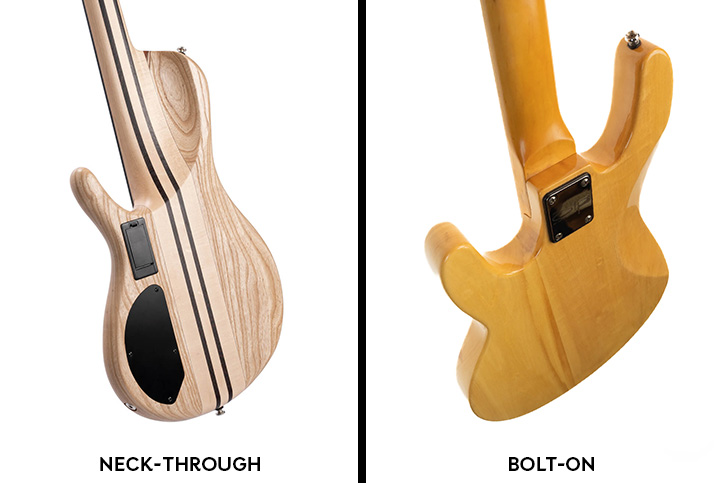
Bolt-on neck? Neck-through? – people will discuss the sound benefits of different neck-to-body joining options.
IGNORE THIS.
File this with the tonewood and the neck wood points. It seriously doesn’t matter for the beginning bassist.
#5Neck Shape
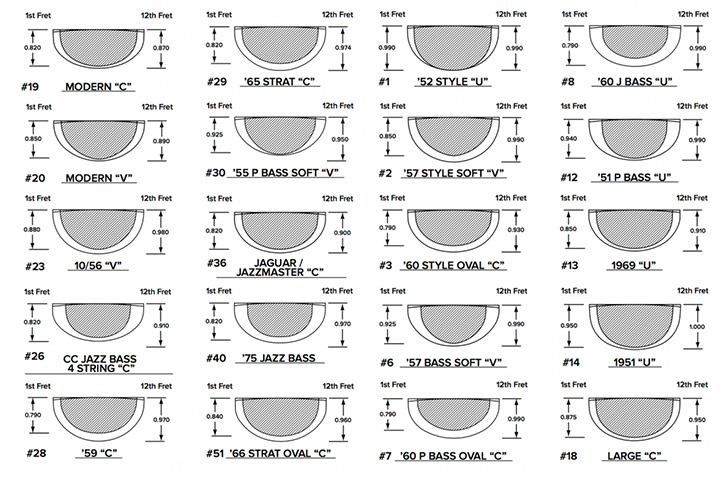
People will discuss the width of the neck, the curvature of the fingerboard, the thickness of the neck, and whether the neck tapers as it comes to the nut or not. IGNORE THIS.
You can’t possibly know what the benefits or drawbacks are of any of these options until a bass is in your hands. This is 100% something you have to feel and heft if you want to make a decision.
#6Type of String
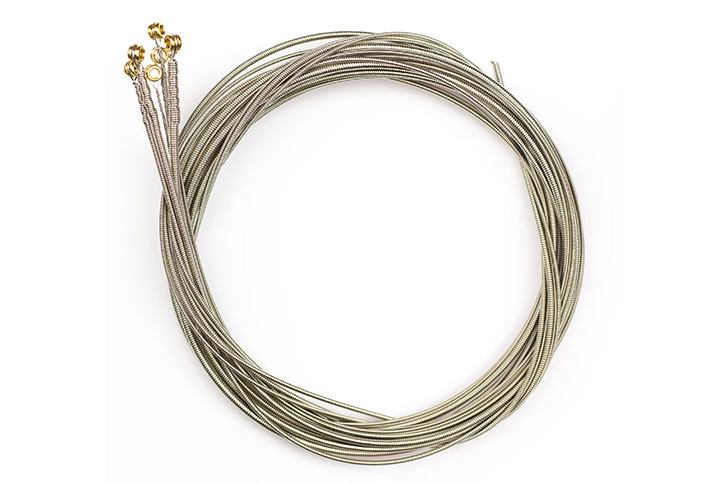
Roundwounds, flatwounds, half-wounds, tapewounds, deathwounds, spicytunawounds… etc – people will spend lots of time discussing the massive importance of string brand, string age and string type. While all of this is important to the performing bassist, as a beginner you can…
IGNORE THIS.
99.99% of all basses come with roundwounds, so if you want to try other strings, it’ll be on your time and dime after you get a bass that has roundwound strings on it.
#7Fretless vs Fretted
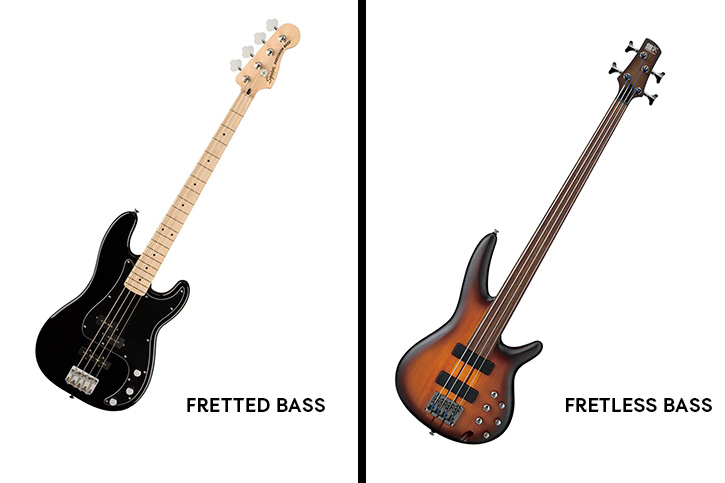
People will talk about how much they love the sound of a fretless, the advantages of fretless over fretted, when a fretless is necessary, etc. IGNORE THIS.
If you’re just starting out, get a fretted bass. They are far and away more common, more in demand, more expected in all music scenarios, and much, much easier to get good sounds out of.
99% of all the bass lines you like are FRETTED basses.
If you have a full chest tattoo of Jaco Pastorius shaking hands with your full back tattoo of Pino Palladino, feel free to ignore me and get that fretless.
#8Left-handed Basses

If you’re left handed, you will find people advocating for left handed basses. They’ll say things about dominant hands, natural tendencies, etc. etc. IGNORE THIS (probably).
I am not a lefty. But BassBuzz Josh is. And he plays right-handed. His advice:
If you’re a beginner, you’re going to be training your hands to do this weird bass thing from scratch. It makes more sense to play right handed, cuz you’ll get the benefit of having every instructor and instruction material play like you do, and you’ll be able to find basses to play more easily.
Stores always have one, sad left-handed bass at the end of their 50 or so right-handed instruments.
Caveat – if you pick up a left-handed bass and it feels AMAZINGLY GOOD compared to the righty instrument, ignore the “ignore this” of this one bullet point.
#9Acoustic Basses
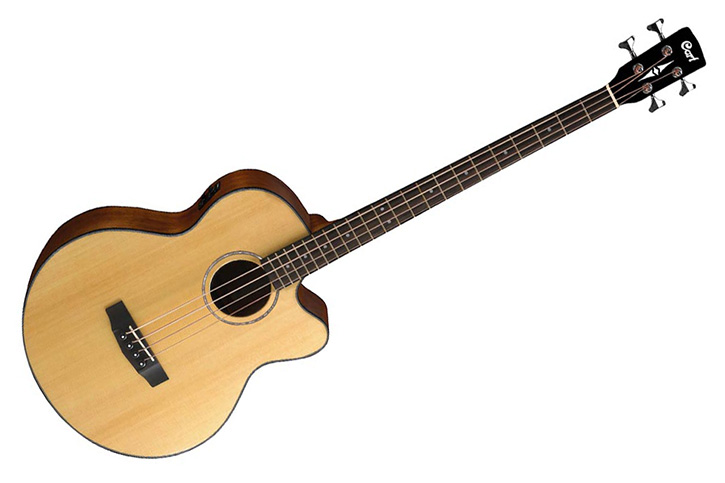
People will talk about getting a bass they can just pick up and hear without plugging in, bring to the campfire, take to the sing-a-long jam session, etc. There are basses that are built like giant acoustic guitars, but are actually basses. IGNORE THIS.
While these basses are built to look like acoustic guitars, they don’t have much bass tone or projection when played acoustically. They get buried very quickly in most acoustic playing scenarios.
Because they don’t have pickups, there’s nowhere to anchor the thumb for plucking.
Because the bodies are so big, it can be very uncomfortable to get your arm over to actually play the things.
If you want to know what an acoustic instrument looks like that actually has bass and projection… that’s an upright bass. A giant, giant thing. That’s how big it needs to be to have projection and bass tone.
#104 String? 5 String? More Than 5 Strings???
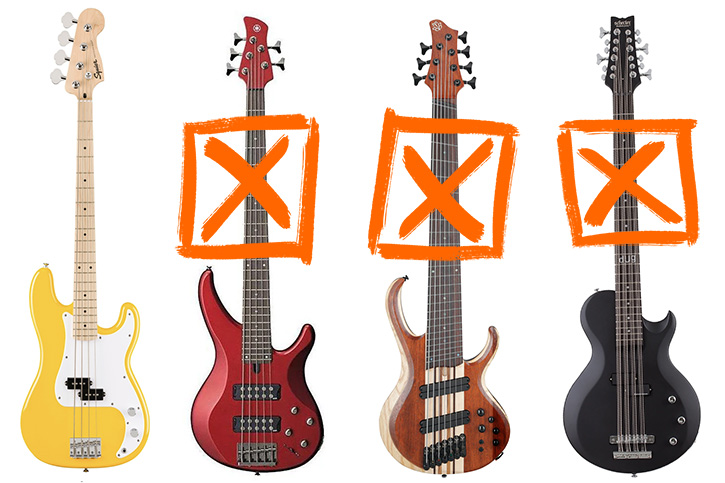
People will discuss and debate the pros and cons of how many strings your bass has. IGNORE THIS.
As a beginning player, 4 strings is the perfect number of strings.
The occasional 5 string song that comes along will serve to inspire you to learn bass and save up for the next bass, which can be a 5 (or more) string.
Naturally, you can ignore me telling you to ignore things.
If you’re dead set on a 5 string, fretless, left-handed, acoustic bass with flatwound strings and you’re going to research the hell out of the woods and the pickups you can choose from…
I can’t stop you.
But you won’t be as good at bass as the person who goes out and finds the much more accessible 4 string, fretted, right-handed electric bass with whatever wood, pickups and strings it comes with.
They’ll be practicing while you’re still researching the resonant qualities of alder wood.
4 Things to Focus on
I am injecting a small amount of snark into the article, but only because I am fervently hoping that I can keep you from falling into the crowd of over-informed, under-experienced bass buyers that are a product of internet deep dives.
And while I will eventually say a few words about brands and models, the majority of bass-buying wisdom has nothing to do with brand specifics.
Bass-buying wisdom has everything to do with knowing whether or not a bass:
- LOOKS GOOD
- COSTS GOOD
- WORKS GOOD
- PLAYS GOOD (FEELS GOOD / SOUNDS GOOD)
The first two you can prepare without a bass in your hands. The second two need a bass.
Preparing To Buy a Bass
Things You Can Do Without an Actual Bass in Your Hands
#1Looks Good
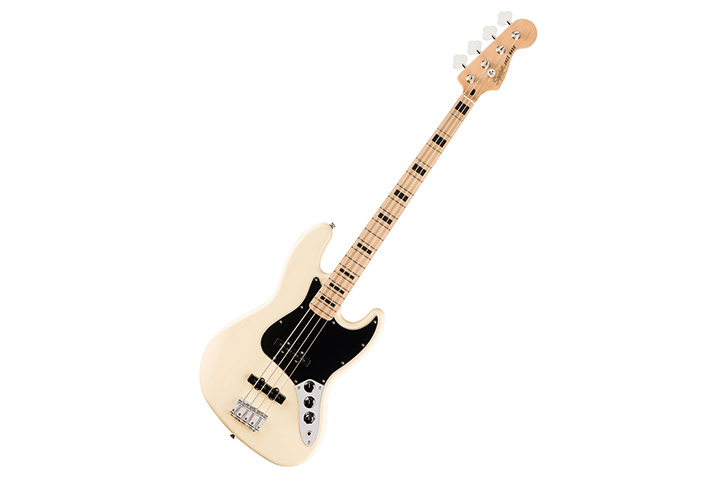
If this ends up being 90% of your bass-buying criteria, I fully support you.
When you’re starting out, everything about plucking giant metal wires strung across a big slab of wood can feel very awkward. How do you know what feels good when it’s all new and weird?
And it all sounds like… bass. How do you know if it sounds like good bass or bad bass?
This can all take time and experience before it starts to affect your bass world.
But looks?
You know what looks cool to you right away.
You should buy a bass that you love the look of.
Be stoked on your bass. Be the friend that sends photos of their new bass to the text thread. Love your cool-looking bass.
Be stoked on your bass. Be the friend that sends photos of their new bass to the text thread. Love your COOL-LOOKING bass.

This looking-at-basses-on-the-internet rabbit-hole is particularly deadly. Yes, you want a bass that looks cool. But within 5 minutes of surfing bass images, you’ll end up on some custom bass-builder website putting together your dream instrument that will cost $5,000 and won’t be delivered for 3 years.
So – I urge caution.
Definitely look at basses, find ones that you love, but set a timer. Have a safe word. Something. (And, for the love of Cliff Burton, don’t have your first bass be a custom instrument from an artisan builder!!! – more on that later.)
There are also some serious things to consider with looks. Prepare yourself to ask these questions when confronted with a real-life bass:
 Looks Good Checklist
Looks Good Checklist
 Visual Check
Visual Check
- Do the strings and other parts look rusty and gross? Even new instruments can hang around stores for a while and get grimy.
 Wear and Tear Check
Wear and Tear Check
- Does it look used in a cool, well-treated way? Nicely antiqued, weathered, worn, in a way that gives you good ‘hip and vintagey’ vibes?
- Does it look used in a traumatic, neglected way? Massive dings, scratches, cracks, rust, missing or badly replaced parts, etc.
Even if all you care about is the look of your bass (again, I applaud you), you still need to clear that terrible, bring-you-back-to-reality hurdle:
Money.
You have to be able to afford your bass.
You need a bass that…
#2Costs Good

There’s a plus side to having a tight budget. In a world of near infinite bass choices, if you set a limit to what you can spend, you’ll make the bass search a million times easier.
 Costs Good Checklist
Costs Good Checklist
 Happy Home Check
Happy Home Check
- Can you buy a bass and still have a happy home life?
 Bills Check
Bills Check
- Can you buy a bass and still pay rent / buy groceries / pay bills?
People tend to forget that you have to buy a bass and a lot of other things with the bass to become a fully armed and operational bassist.
Don’t forget to factor these other bits into your bass budget:
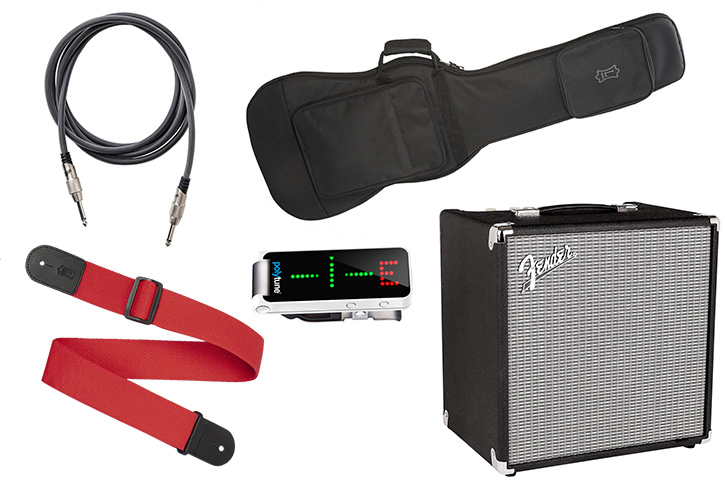
- A cable ($20 -ish)
15 feet is plenty for practice in a room. 25 feet is good for on stage. No cables are perfect. Just get one that has a decent gauge and doesn’t look like a cheap toy from a Radio Shack discount box.
- A strap ($20 – 60 and up, if you go for thick, leather, lots of padding, etc.)
It’s a good idea to always play with the strap on your bass. Whether you’re sitting or standing, it helps with the balance, and shifts the weight to your shoulders instead of your playing hands.
- Gig Bag ($25 – $50 and up… you can get some very nice bags)
Don’t get a hard case! If the bass comes with one, fine. But you will want a soft case. They are cheaper, more practical, more useful, and until you’re loading your bass into the back of a tour van with all the other gear, it will be just fine for protecting your instrument.
- Tuner ($20 – 100 depending on what style tuner you get)
I recommend a simple clip-on tuner to start. They’re portable, versatile, and do a fine job of helping you keep your instrument in tune.
- Amplifier ($100 – $250)
Please don’t skimp here!
You can find dinky little amps that will work… but they will also make your new bass sound like a weak, twangy guitar.
It’s more money, but if you’re getting a decent instrument, don’t skimp on the practice amp! Get something that will make a lovely, satisfying sound so that you’ll love the sound of practicing!
And you still have to go buy the damn bass!
It’s an investment, to be sure. If you’re at a very cool guitar shop, they may throw some of these things in with the bass purchase.
You can hit up all your musician friends for some hand me downs.
You can also find some of these items used to trim cost.

One thing that can really help trim costs is our 100% completely free Kickstart Course.
At this point, you’ve done all the at-home bass research, planning and preparation you can do.
In order to figure out what you, specifically, like about different basses, you need to have a bass in your hands.
A Word About Bass Brands
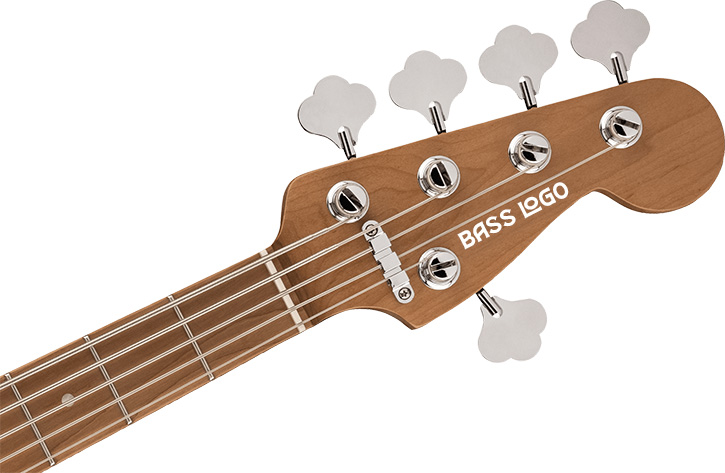
I know, I got all potty-mouthed at the beginning and took a big s*#! on internet over-education. It’s time for me to gently walk that back.
Hearing every internet bass-content-creator’s opinion about basses, brands and models isn’t always helpful, but being aware of the different brands and models certainly is.
Knowing your way around the known and trusted bass manufactures, models and brands can be very helpful when buying your first bass.
Known and Trusted Brands are known and trusted because, more often than not, they make decent products.
They also hold their value much better than unknown, generic brands, which is great if you want to sell your beginning axe to upgrade later. (Custom built instruments are notoriously hard to sell used! Be warned!)
My short list of known and trusted brands (particularly for beginner level instruments) is:
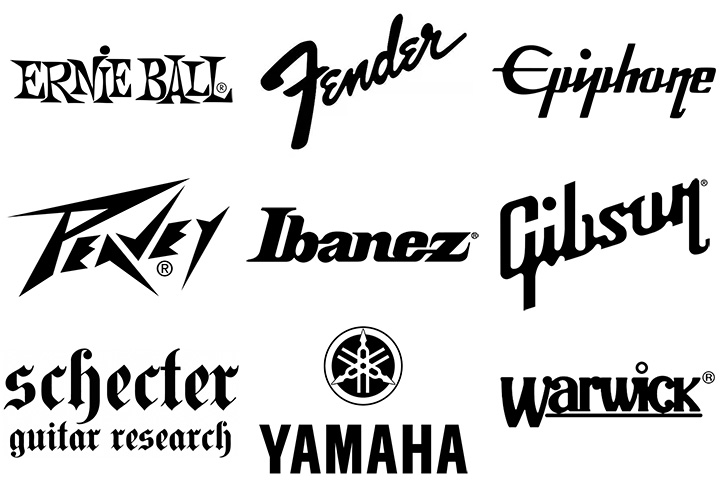
- Fender / Squier
- Yamaha
- Gibson / Epiphone
- Ibanez
- Schecter
- Ernie Ball / Sterling
- Sire
- Warwick
- Peavey
There are a million more brands, but there are enough basses in this list to get started.
If you are buying a bass from one of the known and trusted brands above, I have faith that it will be within a certain realm of decent.
If you are considering buying anything that comes up on the search “cheap beginner bass” that isn’t on this list, DON’T DO IT! There are some serious pieces of crap out there that defy my premise that “any bass is better than no bass.”
If you’re not sure where to start, check out your favorite bass players. What do they play? If you like a bass sound that you’ve heard, that’s an ideal place to begin your bass search.
Regardless of make, model, age, cost or look of the instrument, you still need to have it in your hands to know if you like it or not.
Actually Buying a Bass
Things You Must Do With an Actual Bass in Your Hands
#3Works Good
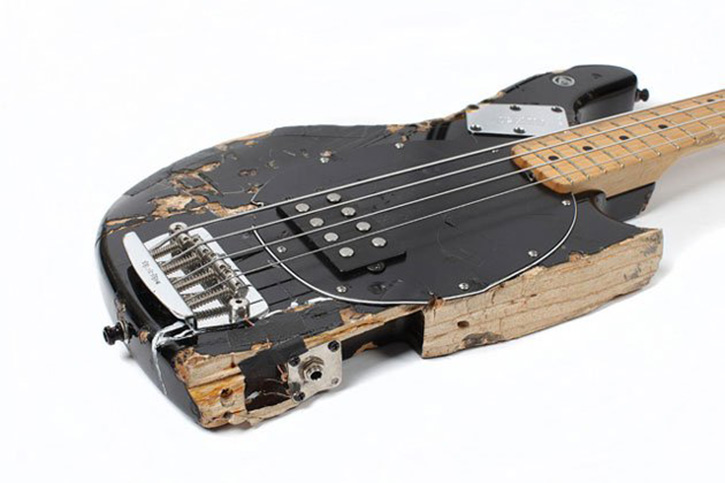
You want a bass that works.
This seems beyond basic, but – particularly if you’re looking at used instruments – you want to make sure everything is in working order.
 Works Good Checklist
Works Good Checklist
 The interference check
The interference check
- Is there an annoying, loud buzzing when the bass is plugged in?
 The cut in/out check
The cut in/out check
- Does the sound cut in and out?
 The jiggle check
The jiggle check
- Can you gently jiggle the cord plugged into the bass without terrible pops and explosions coming out of the speaker? (emphasis on gently.)
 The dubious seller check
The dubious seller check
- Is the sales clerk / used-bass-craig’s-list-seller saying things like:
- “Yeah, it does that sometimes…”?
- “You just can’t touch the cable…”?
- “If you move a little bit, that goes away…”?
- “Yeah, you’re gonna wanna fix that…”?
 The knob turner check
The knob turner check
- Can you turn all the knobs without hearing gross crackly sounds, or the signal going in and out?
 The tuning pegs check
The tuning pegs check
- Can you tune the bass up? Do the tuning pegs all work and move? Are they smooth and tight, or do they click and clack and slip?
 The strap button check
The strap button check
- Are the strap buttons present and secure on the bass?
Even new instruments can have faulty parts, so prepare to have your listening ears on, prepare to gently jiggle the cable, wiggle them knobs, and tune the thing.
You want a bass that is problem free, and reliable.
Electric basses are affordable enough that there’s no reason* to buy a fixer-upper. Go ahead and wait for a fully-functioning instrument.
*There are always exceptions. For example: if you find a beat up vintage Fender at an estate sale, yes. Buy it and fix it up. Then send it to me. Thank you very much.
#4Plays Good! (Feels Good + Sounds Good)
If the bass is working you need to make sure it plays well.
How a bass plays is a combination of how it feels for you to physically move your fingers around on it, and the sound that comes out. They both have to be satisfying if you’re going to buy the instrument.

 Plays Good Checklist
Plays Good Checklist
 Vibe It!
Vibe It!
When you get settled to play the bass, – before you tune it, before you play a note – how does it feel? How does it balance on your body / on your leg?
Is there a feeling of comfort and good vibes from the instrument in that first moment?
Notice it! Savor it!
 Tune It Up.
Tune It Up.
Hopefully you already did this to make sure the tuning pegs were working.
Is it still in tune? Has it slipped?
If it doesn’t sound good when you play it, you want to be sure it’s the bass and not just the fact that you didn’t tune it up first.
 Pokey Frets
Pokey Frets
Put your hands on the bass like you’re going to play it.
One hand will be the fretting hand, one hand will be the plucking hand.
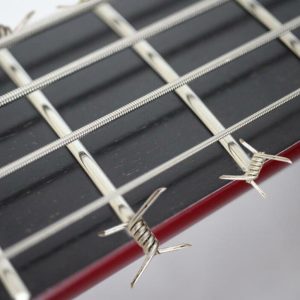
Just slide that fretting hand up and down the neck a few times with your fingers laying gently on the strings.
Are there any pokes or moments where your hand gets caught on one of the fret wires?
That won’t feel good.
 Balance / Strap Test
Balance / Strap Test
Without a strap:
Is the bass resting comfortably against your body and in your hands?
Is the headstock trying to dive straight into the floor?
You’ll probably have to do a bit of counterbalancing with your fretting hand on the neck, or your forearm of your plucking hand on the body of the bass, but it shouldn’t be difficult or annoying.
It should feel good.
Put a strap on that bass.
How does it feel weight and balance-wise with the strap?
Practicing and performing with a strap is a good bass habit.
Does it still feel good?
 Make Sound
Make Sound
When you pluck the strings (test the bass plugged into an amp, for the love of god!), does it sound good?
Is it making the basic, big, low bassy sounds that you want?
 Buzzy Frets
Buzzy Frets
Depending on how beginning of a beginning bass player you are, you can try this playing test.
Move up fret by fret on the bass up to the 15th fret on each string.
You should get good, clear, unbuzzy notes all the way up.
If it’s buzzy, was that some bad playing/fretting technique from you?
Or was it the bass?
If it’s the bass, that doesn’t sound good.
 Weight Check
Weight Check
How’s the weight?
If you were performing standing up and had to wear this bass with a strap for an hour or two, would you survive? Is it so light that you are suspicious it is not, in fact, made with solid materials?
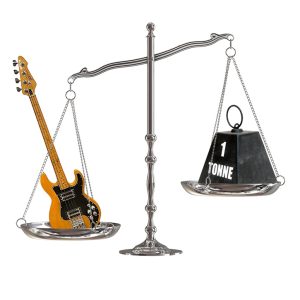
You need to be comfortable with the weight in order for it to feel good.
 Action
Action
Are the strings close enough to the fretboard? If you go to play a given note and the strings are waaay high off of the fretboard, that won’t feel good.
Also, if you have to push down that far and that hard to get a note to ring, there’s a very good chance it won’t sound good either.
You want the bass to have a good setup to make fretting any note comfortable and easy.
 Neck Inspection
Neck Inspection
How does the neck feel?
Do your fingers comfortably reach the frets?
Is it too wide? Too thick? Too curved?
You might not even be able to say why you don’t like the feel of a certain bass neck, but your hands and arms will know.
The neck has to feel good.
 Sample Groove
Sample Groove
If you already know how to play something on the bass, play it.
How does it feel to play some music on this bass?
Is it comfortable? Awkward?
Do you have a place to anchor the thumb of your plucking hand?
Does it feel good to play?
Does it sound good when you play?
The Shopping Trip
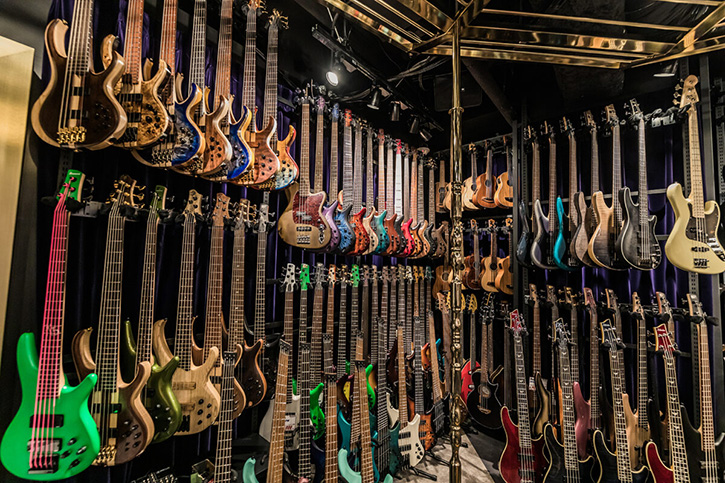
When you feel ready to step out and start spending that money, you’ll do it in one of three ways. You’ll either go to a music store, find a used bass from someone, or you’ll order online.
In all of these cases you’ll finally have a bass in your hands.
Once you’re there, don’t forget your handy checklists from up above.
But buying – in any of the 3 scenarios – has its own challenges. Here are some extra tips that can help out no matter what way you buy.
Buying a Bass From a Store
I know I’m old fashioned, but having local music stores is something I treasure in every community I’ve lived in, visited and toured through. The people that work here tend to love instruments (even if they don’t always know how to deal with other humans), know heaps about instruments, and are the repository of gear lore, word-of-mouth reviews, and real life experiences with the gear you’re looking for.
Bonus: There are also instruments to look at and play.
If you can, find yourself a shop. Massive bonus points if it’s a local shop and not a monster chain, but I’m not getting up on that soap box today.
Having a Bass Buying Buddy
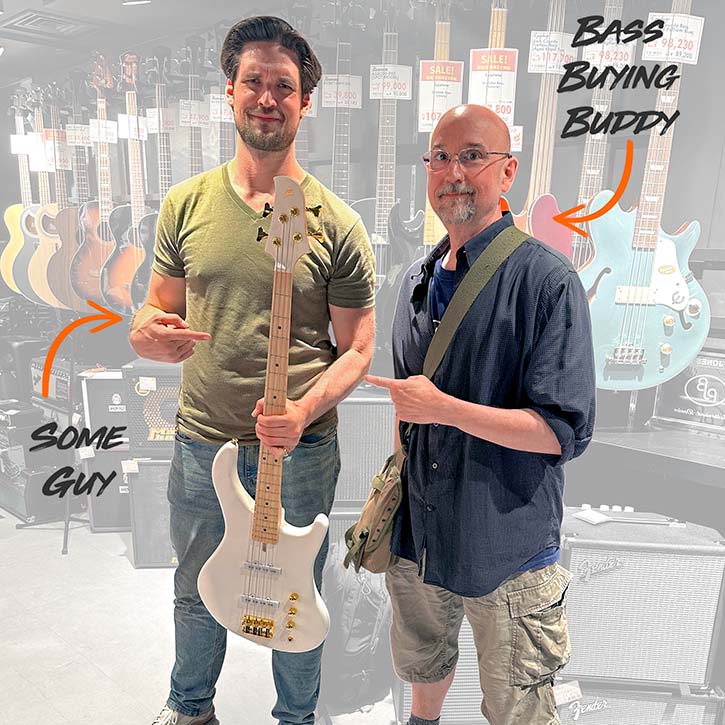
It’s a great idea to have a bass buddy when you go to buy your first bass. Hopefully you have a friend who has some bass experience.
This could be a buddy, a family member, or even a private instructor. I have gone on bass-buying field trips with many students, and it’s always tremendously helpful for everyone, and it’s great for me (or your bass buddy) because I get to play tons of basses.
You’ll have someone with an unbiased opinion but plenty of experience to give another take on whatever bass you happen to be messing around with.
What to Play in the Store Paralysis
If you’re a beginner in a room full of other humans (let alone other musicians), it can be uncomfortable when the salesperson hands you a bass and says, “go on, try it out.”
Here are some options for that moment:
- Have your Bass Buying Buddy there!
- Ask the salesperson to demo the instrument, as you’d like to hear it, and you’re just a beginner (prepare for some serious slap bass and potential wankage).
- Remember the ideas laid out above in “Plays Good” – play open strings. Play one fret at a time and look for buzzy frets. Just dink around on the thing.
I’ve worked and hung out in many music stores in many places for many years. If you are honestly trying to hear the sound of the bass, there is nothing you can play or do on the instrument that will be shameful, embarrassing or terrible. Ya gotta hear the dang thing.
We music store employees have seen some serious s#%*.
You’ll be a delight and a joy.
Buying a Used Instrument
I’m talking here about when you find something on Craig’s List or Marketplace, or any other local classified go-meet-someone-and-check-out-the-bass type of scenario.
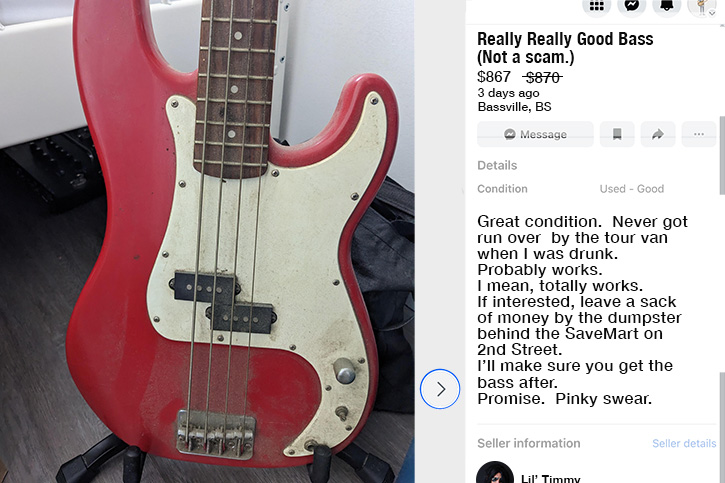
Have a Bass / Safety Buddy
OK, I suggested having a bass buying buddy if you go to the store.
That’s a luxury and convenience. But in this potentially shady world?? It’s necessary. They don’t have to play the bass. Just make sure you have someone to witness the potential transaction, and keep things feeling safe.
Make sure you’ll be able to take your time, play and test the bass
Don’t meet in the supermarket parking lot.
You’ll have to meet somewhere you can really put the bass through the tests (as described above). You absolutely have to try it out plugged-in to an amplifier.
The Lemon Alert
Watch for these signs. Even basses from Known and Trusted brands can be abused into lemon status.
- Super High action
- Signs of Neglect ( rust, cobwebs, dust, loose and broken parts, old strings, missing strings, missing pieces, etc.)
- Scratches, dings, cracks, obvious (and possibly amateur) repair jobs, and other signs of rough treatment
- No serial number, or a lack of identifying marks (missing logo, missing model, Logo looks hand-drawn, etc.)
- It’s being offered out of the back of a windowless van

Buying a Bass Online
While I treasure and encourage local music shop patronage at every opportunity, I also fully understand that going to a shop is not an option for some people. Same for braving the wastelands of used gear sites.
So if you have to buy online, these two tips will save you from future pain and heartache.
The Return Policy!
Get very familiar with the company’s/individual’s/website’s return policy.
Because so much of bass buying is about the individual instrument, you need to make sure you have a way out if the bass you get sent doesn’t look/feel/sound/play/work good!
Also, if you entertain the idea of returning the bass, make sure you’re ready for the time and energy to re-pack, re-box and re-ship a bass. Don’t get stuck with something you’re not happy with just because of the hassle of returns and shipping!
Prepare to Learn Bass Maintenance!
Instruments shipped from the factory or even, sometimes, from shops may be straight out of the box. This means you’ll have to be the one to tune it up, and get it set up in its optimal playing condition.
Conclusion
The right bass is the one that you can play.
Having a bass makes it one million times easier to get better at bass vs not having a bass.
So long as you can stay out of the deep rabbit holes and maintain your relationships, buying a bass can be low pressure and amazing.
Now, go buy a bass and play it.


Comments
Got something to say? Post a comment below.